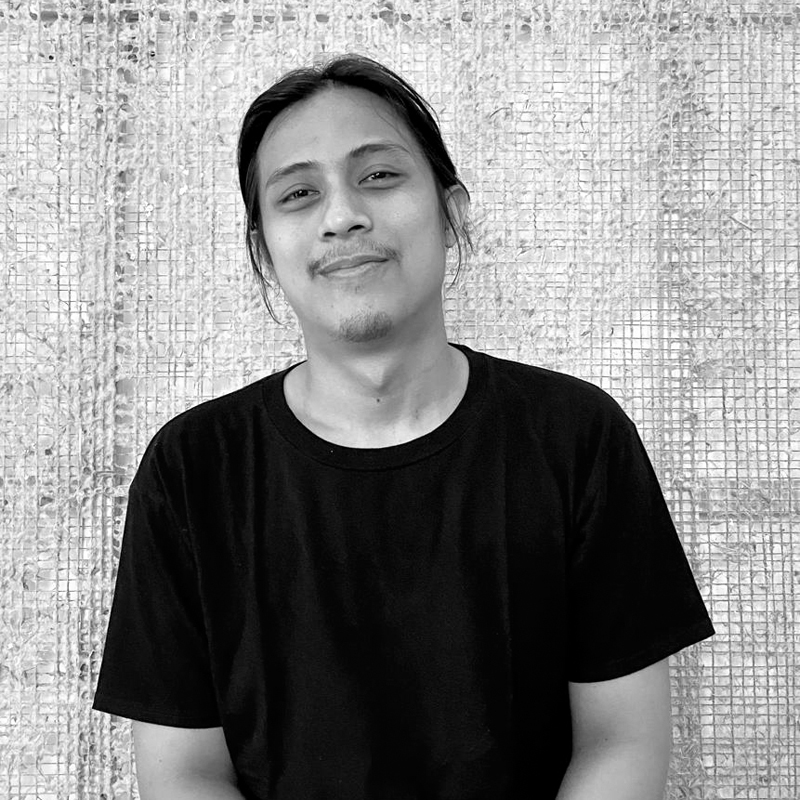
Widi Pangestu (born in Bandung, 1993) is an artist who graduated from Indonesia Institute of the Arts (ISI) Yogyakarta. He underwent a transformation from a creative introvert to a 'conversational anthropologist' which enabled him to understand the complex interactions between individuals and cultures. In his work process, Widi uses paper as the main medium through traditional papermaking techniques. The process of making paper by hand (hand papermaking) gives Widi the opportunity to own the rights to the materials he uses. He uses this freedom as an effort to explore materials while opening up the possibility of choice. For him, the papermaking process is an artistic medium that is flexible and can be used interdisciplinary. It is also physical evidence of the relationship between humans and nature which is always related to the dimension of time.
Widi has undergone several art residency programs, including Years of Culture, Dialogue of Paper Program, Qatar Museum, Qatar (2023) and Ricahrd Koh Fine Art Gallery and Blue Art Center Residency Program, Seam Reap, Cambodia (2023). Several of Widi's exhibitions, including Beneath The Layer, Baik Art Jakarta (2023) and Beyond Painting, Mizuma Singapore (2022), as well as his solo exhibition entitled Making Sense of Sense Making, Ace House (2021) and Everything in Between, Indonesia Contemporary Art Network (ICAN) (2017). Widi was also a Finalist in the 39th UOB Painting of the Year competition in 2019.
Widi Pangestu uses paper and traditional papermaking techniques as the main media in his works. For him, processing by hand opens up the opportunity to take ownership of the material. He acts as an anthropologist, weaving relationships between humans and cultures. For him, the idea of the art of papermaking produced by a piece of handmade paper becomes a documentation and an artifact, and reminding us that we are part of the past, present and future through both the latest forms and the most primordial forms. He tries to trace the plant that produces paper, namely bamboo.
Currently, bamboo has the potential to be a future material based on its sustainability aspect. Technically bamboo is a wild grass, and there are 1,450 species spread across various biotopes, from tropical areas like Indonesia to the cold mountains of Tibet. Bamboo also plays an important role in carbon sequestration, an important process for mitigating climate change. We often find processed bamboo as an alternative medium to replace wood for the same reason, namely sustainability. Such as tissue and paper which use bamboo as the main material. In the history of papermaking practice, bamboo-based paper has been around since the 8th century AD.
From his research, he found several important points in history that inherited the symbolic position of bamboo material. One of them, since Japan first opened itself to the world in the mid-19th century, bamboo art began to be considered a work of art, previously it was only identified as a functional object. Like most arts that are rooted in tradition, this practice is inherited from previous generations. Values also come with a diversity of symbols, especially in Asia. In the Philippines they believe that the first man and woman emerged from the knots of bamboo sticks. In China, bamboo has become a cultural symbol and in Japan it has become a symbol of prosperity and friendship. In Indonesia itself, bamboo is a symbol of simplicity and resistance.